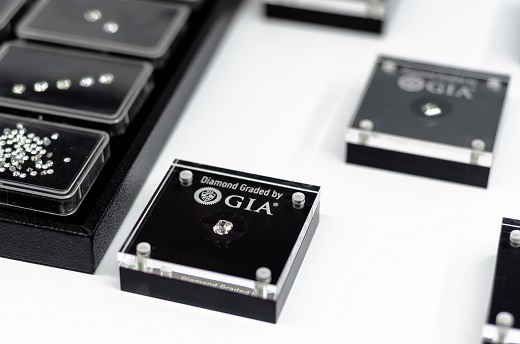|
|
GIA Backlog Raising Concerns for Manufacturers
Mar 25, 2021 6:23 AM
By Joshua Freedman
|
|
|

RAPAPORT... Customers of the Gemological Institute of America (GIA) are experiencing severe delays to grading submissions, creating worries about inventory management, Rapaport News has learned.
A sharp increase in rough buying since December has led to heightened demand for grading reports, while lower capacity because of Covid-19 restrictions has placed extra pressure on the GIA. The turnaround time in some markets is currently up to 25 days, compared with the usual period of around seven days, diamond manufacturers reported this week.
“Demand for GIA diamond-grading services is at an all-time high,” said Tom Moses, the GIA’s executive vice president and chief laboratory and research officer, in an email interview with Rapaport News on Wednesday. “That demand, and coronavirus impacts including government-mandated capacity restrictions, transportation constraints and absenteeism, have all led to longer-than-acceptable service times.”
Manufacturers in India — the world’s largest diamond-manufacturing hub — reported particularly serious backlogs at the Mumbai laboratory, one of the GIA’s busiest grading centers. Last week, the state of Maharashtra, in which Mumbai is located, ordered businesses to restrict in-person capacity to 50% in response to a rise in coronavirus infections.
According to the GIA’s website, a D- to Z-color diamond submitted to the Mumbai laboratory on March 25 would be ready on April 22. Some clients said they had been shipping goods to GIA locations in other countries in search of a faster turnaround.
De Beers and Alrosa sold almost $2 billion in rough in January and February, reflecting a recovery in demand as the retail market picked up during the holidays and manufacturers restocked. Moses said the GIA had managed to maintain usual service times up until the current demand surge, despite capacity restrictions in Mumbai, New York and other locations.
The fact that there are fewer flight options for moving goods between laboratories exacerbated the situation, he added. The GIA routinely sends diamonds from one location to another to manage capacity and ensure a random distribution around the world, the executive explained.
The delays are adding to the time it takes for companies to turn goods from the original rough into sellable polished, manufacturers pointed out.
“The total number of days that goes into the production is [usually] less than one month,” a manufacturing executive said. “When the certification time is exceeding 25 days, it hits the financials.”
There’s also a risk that the graded diamonds will enter the market at the quietest time of the year for polished demand. The coming months contain few seasonal selling opportunities.
“Now what will happen is the goods will hit in…April [through] June, which are typically the slower months,” another cutting executive noted. “It will put that pressure again, because there will be more inventory and less demand.”
The GIA has introduced extended schedules and extra shifts to deal with the situation, with some laboratories working on weekends.
It has also launched a fast-track option that gives grading results within five to seven business days. For this priority service, clients can designate 10% of the D to Z diamonds they have submitted. Those who have sent goods to more than one GIA laboratory may request the service from each of those locations.
“Service time will improve as we are able to add capacity, operating within government restrictions and ensuring the continued health and safety of GIA staff in all locations,” Moses said.
Image: GIA-graded diamonds. (Shutterstock)
|
|
|
|
|
|
|
|
|
|
Tags:
GIA, grading, India, Joshua Freedman, Manufacturing, mumbai, Rapaport News
|
|
|
|
|
|
|
|
|
|
|

|
|